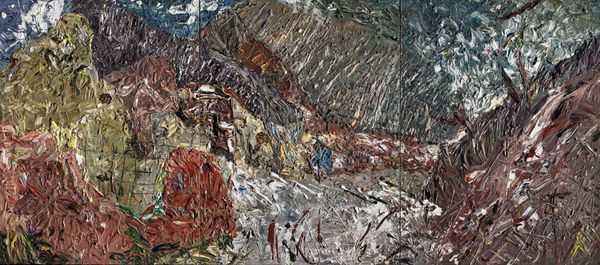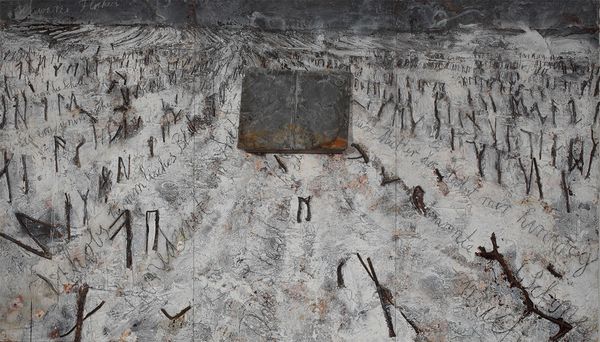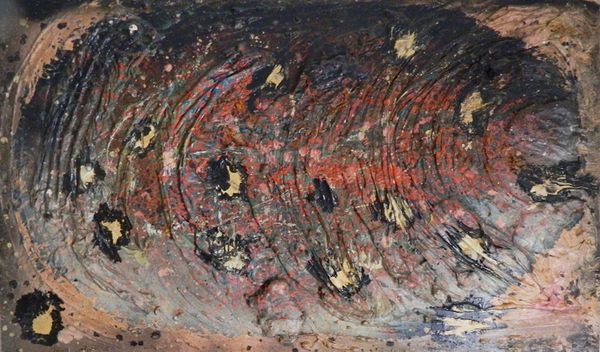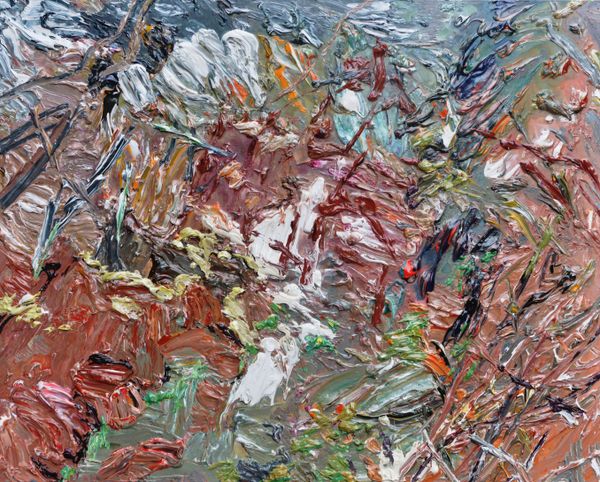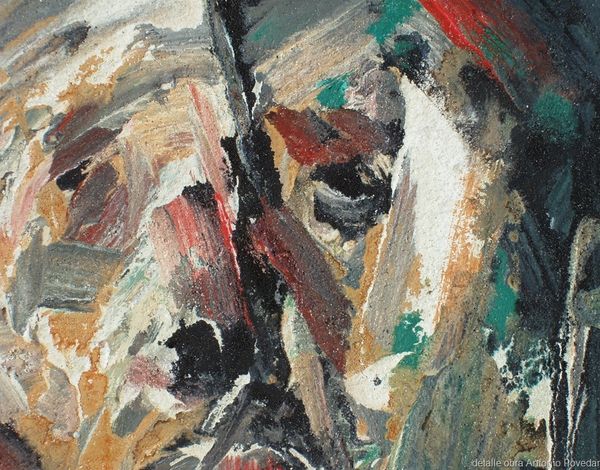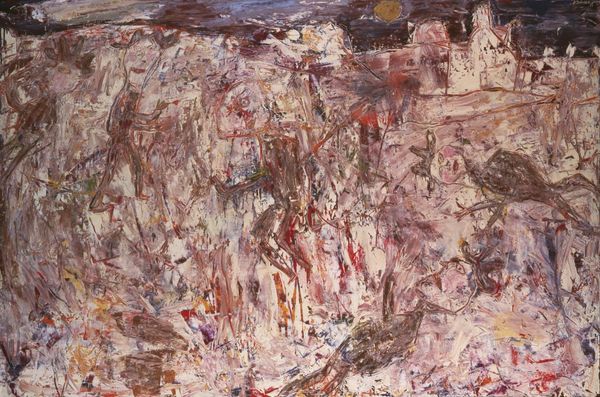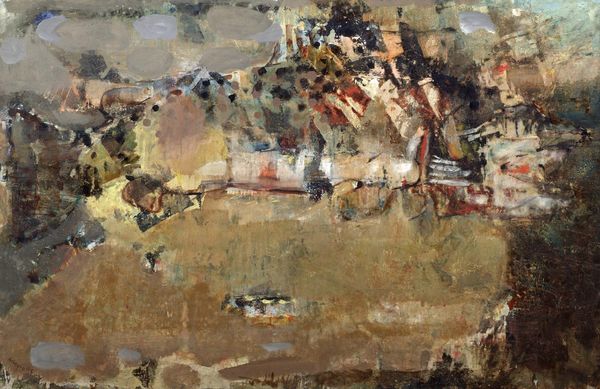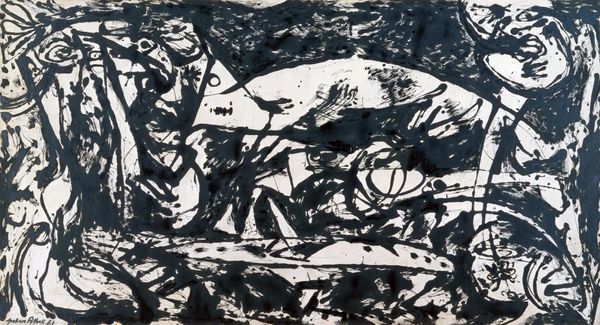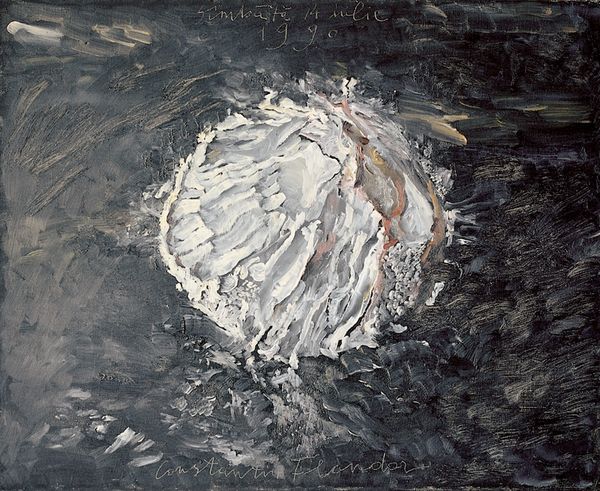
Copyright: Anselm Kiefer,Fair Use
Curator: Welcome. We are looking at Anselm Kiefer's “Palette,” created in 1981 using mixed media including acrylic paint and matter-painting techniques. Editor: Stark. The grays and browns feel heavy, almost oppressive. And is that a roughly drawn loop with something inside hovering at the center of the piece? Curator: Yes, it does seem that way. Kiefer frequently integrates unconventional materials to engage with difficult historical narratives and themes of destruction and rebirth. He pushes the boundaries of painting. What could this palette imply about the art-making process in relation to his themes? Editor: Given the historical weight often present in Kiefer's work, I wonder if this “palette” represents the artist’s own struggle to grapple with historical trauma, like a craftsman facing materials tinged by memory. It’s also interesting to consider the role museums and collectors play in contextualizing—and sometimes sanitizing—such powerful and loaded works. Does placing such art in institutions neutralize its historical critique? Curator: A pertinent question! It might even lead to a re-evaluation of art and cultural value in response to global economic powers... the commodification of trauma. But back to the materiality, there’s almost a sculptural quality to the paint application, giving it a very tactile surface. One could easily consider the means by which the surface quality was arrived at through his choice of tools. The built-up texture evokes decay or perhaps layers of memory, each application, a laborious act to bring forth what he felt the world should confront. Editor: Indeed. Considering his works are frequently housed in such highly guarded spaces—protected, regulated—there's a clear friction between intention and institutional display that makes for compelling historical analysis, raising many questions of display, value and context. It also serves to highlight the socio-political dimensions inherent within our artistic inheritances. Curator: Precisely. Kiefer encourages a deep engagement with his work’s social implications through his own unique material vocabulary, urging one to look into the darker aspects of art history and society. Editor: This piece asks important questions about history, making, and displaying in today’s society. Food for thought. Curator: Absolutely, inviting an essential ongoing discussion of these issues.
Comments
No comments
Be the first to comment and join the conversation on the ultimate creative platform.
